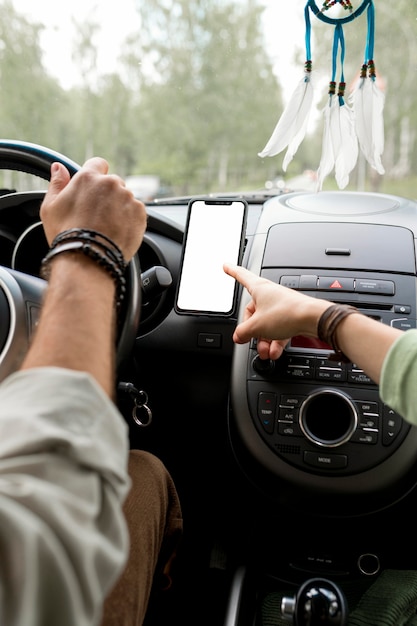Hands-Free Infotainment: Effortless Interaction

David Owen from Ultrahaptics shares insights on the future of touchless gesture control in automotive infotainment systems, emphasizing the potential of haptic feedback technology.
These days, the most noticeable advancement in car electronics is seen in their infotainment systems. Top car manufacturers are creating increasingly sophisticated setups that offer a wide range of features and customizable options. However, as these systems become more complex, it’s crucial that they remain easy to use to ensure drivers actually accept them.
Currently, car infotainment systems can be controlled through various interfaces such as steering-wheel buttons, multi-function knobs, and voice recognition. A big trend has been the use of larger displays, replacing traditional buttons and switches with digital touchscreen controls. Consumers now prefer modern-looking car interiors that are also simple to use.
We’re all used to making gestures on smartphones and tablets to control them. But using touch gestures in a car, like pinching and scrolling, can be dangerous because it distracts the driver.
Touchless gesture control is emerging as an exciting alternative for both drivers and the auto industry. This technology uses high-def cameras to track hand movements and can be programmed to ignore other motions. Although each system may vary, touchless gestures from mobile devices show that these kinds of controls can be learned quickly.
However, the car industry faces challenges with gesture-based interfaces. Drivers often don’t know if their hand is in the right spot for the gesture to be recognized or if the system has processed the command. This can lead to drivers repeating gestures or looking away from the road to check the screen, which is not ideal.
A promising solution involves incorporating haptic feedback, which gives users a sensation of touch and is already popular in gaming and consumer gadgets. This technology has made its way into cars, mostly in advanced driver-assistance systems (ADAS). For example, some cars vibrate the steering wheel when drifting out of a lane or use seat actuators to mimic rumble strips.
Though haptic feedback can improve the user experience by providing non-visual cues, traditional methods require physical contact, which isn’t possible with touchless gesture control.
To create a touchless haptic system, new technology is needed. Ultrahaptics is exploring the use of acoustic radiation force to deliver mid-air user feedback, offering a solution for implementing touchless gesture recognition without the need for physical contact.